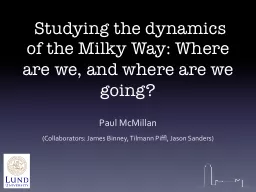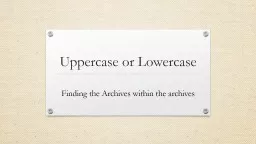PPT-Studying the Milky Way using the WFAU Archives
Author : lois-ondreau | Published Date : 2016-06-06
Nicholas Cross Rob Blake Ross Collins Mark Holliman Mike Read Eckhard Sutorius Nigel Hambly Andy Lawrence Bob Mann Keith Noddle Wide Field Astronomy Unit
Presentation Embed Code
Download Presentation
Download Presentation The PPT/PDF document "Studying the Milky Way using the WFAU Ar..." is the property of its rightful owner. Permission is granted to download and print the materials on this website for personal, non-commercial use only, and to display it on your personal computer provided you do not modify the materials and that you retain all copyright notices contained in the materials. By downloading content from our website, you accept the terms of this agreement.
Studying the Milky Way using the WFAU Archives: Transcript
Download Rules Of Document
"Studying the Milky Way using the WFAU Archives"The content belongs to its owner. You may download and print it for personal use, without modification, and keep all copyright notices. By downloading, you agree to these terms.
Related Documents














